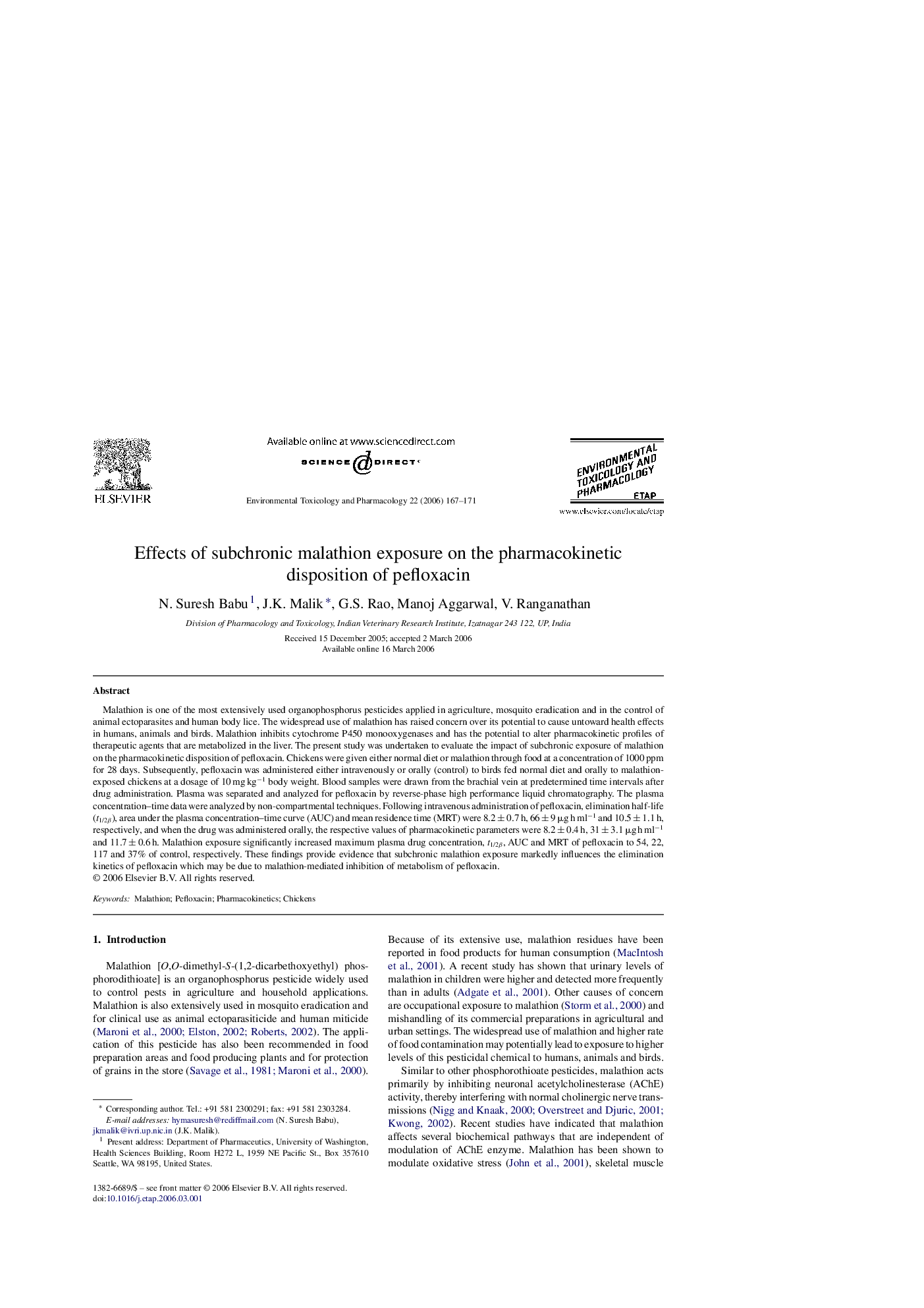| کد مقاله | کد نشریه | سال انتشار | مقاله انگلیسی | نسخه تمام متن |
|---|---|---|---|---|
| 2584500 | 1130744 | 2006 | 5 صفحه PDF | دانلود رایگان |

Malathion is one of the most extensively used organophosphorus pesticides applied in agriculture, mosquito eradication and in the control of animal ectoparasites and human body lice. The widespread use of malathion has raised concern over its potential to cause untoward health effects in humans, animals and birds. Malathion inhibits cytochrome P450 monooxygenases and has the potential to alter pharmacokinetic profiles of therapeutic agents that are metabolized in the liver. The present study was undertaken to evaluate the impact of subchronic exposure of malathion on the pharmacokinetic disposition of pefloxacin. Chickens were given either normal diet or malathion through food at a concentration of 1000 ppm for 28 days. Subsequently, pefloxacin was administered either intravenously or orally (control) to birds fed normal diet and orally to malathion-exposed chickens at a dosage of 10 mg kg−1 body weight. Blood samples were drawn from the brachial vein at predetermined time intervals after drug administration. Plasma was separated and analyzed for pefloxacin by reverse-phase high performance liquid chromatography. The plasma concentration–time data were analyzed by non-compartmental techniques. Following intravenous administration of pefloxacin, elimination half-life (t1/2β), area under the plasma concentration–time curve (AUC) and mean residence time (MRT) were 8.2 ± 0.7 h, 66 ± 9 μg h ml−1 and 10.5 ± 1.1 h, respectively, and when the drug was administered orally, the respective values of pharmacokinetic parameters were 8.2 ± 0.4 h, 31 ± 3.1 μg h ml−1 and 11.7 ± 0.6 h. Malathion exposure significantly increased maximum plasma drug concentration, t1/2β, AUC and MRT of pefloxacin to 54, 22, 117 and 37% of control, respectively. These findings provide evidence that subchronic malathion exposure markedly influences the elimination kinetics of pefloxacin which may be due to malathion-mediated inhibition of metabolism of pefloxacin.
Journal: Environmental Toxicology and Pharmacology - Volume 22, Issue 2, September 2006, Pages 167–171